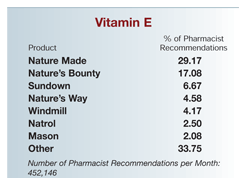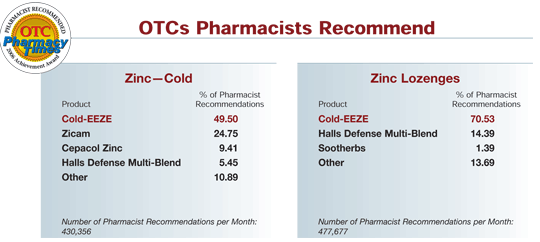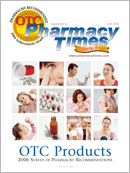Publication
Article
OTC Guide
Pharmacy TimesOTC Recommendation Survey: Why It Matters
Every month, pharmacists make millions of recommendations from among the 1000+ OTC brands. The 2006 Pharmacy Times OTC Recommendation Survey asked thousands of pharmacists to declare their preferred recommendations on brands in more than a hundred OTC categories. In the tables that follow, products are organized by category with the percentage of pharmacists' recommendations that they received. The tables also show the total number of recommendations the pharmacy profession makes each month.
The Pharmacy Times OTC Master's Circle is an elite club made up of those products from the OTC Recommendation Survey that earned pharmacists' recommendations at least 50% of the time. The OTC Master's Circle features 48 products this year.
Scoring well in the Pharmacy Times OTC Recommendation Survey matters. Our readers thoughtfully consider the recommendations of their peers?"Is that what I recommend?" "Should that be what I recommend?" And with billion-dollar blockbuster prescription drugs switching to over-the-counter status, pharmacists will be called on to guide patient choices like never before.
Product manufacturers are also very interested to see what products are at the top of their respective categories. Winners in the 2006 Pharmacy Times OTC Recommendation Survey?those products that received the highest percentage of pharmacist recommendations in their category?qualify to use the Pharmacy Times Achievement Award logo. And Master's Circle winners?those that received 50% or more of all pharmacist recommendations in the category?qualify to use the OTC Master's Circle Achievement Award logo. Winning brand managers are proud of this achievement, and these logos are frequently included in product advertising throughout the year.
Pharmacy Times is pleased to present this year's OTC recommendations.
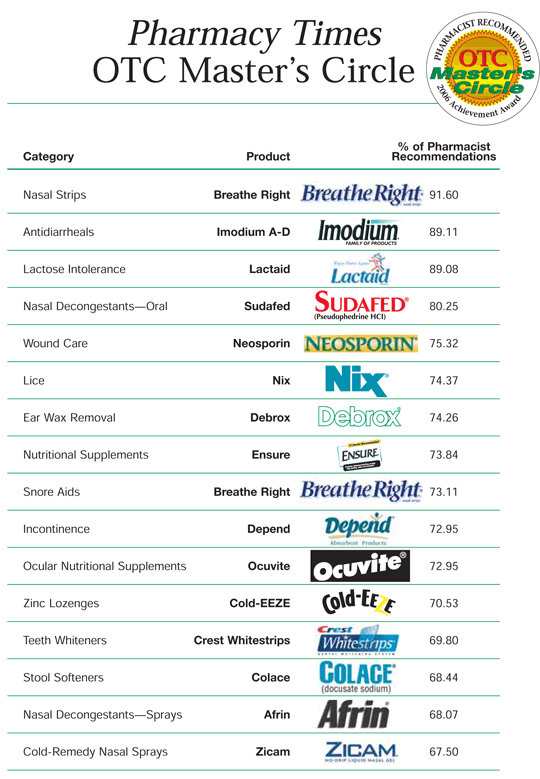
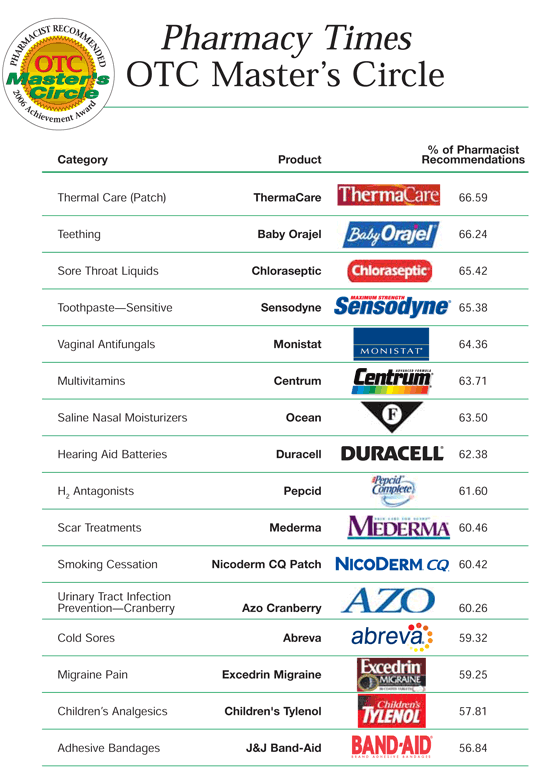
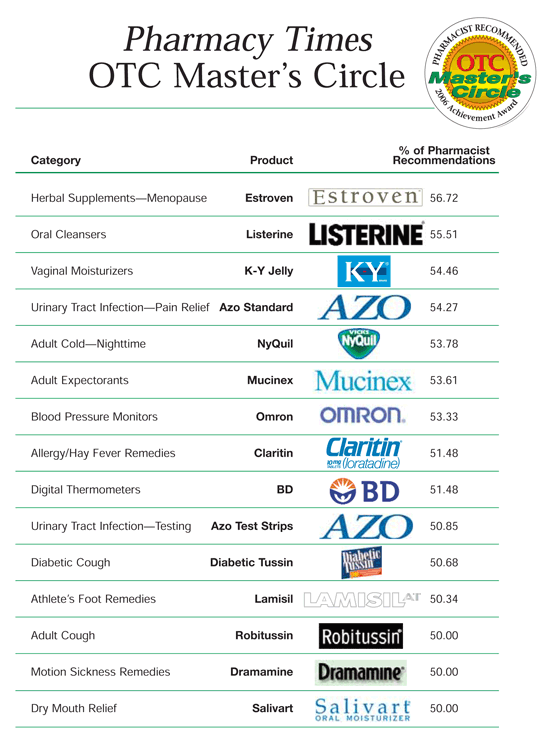
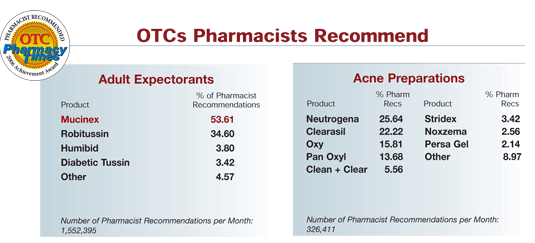
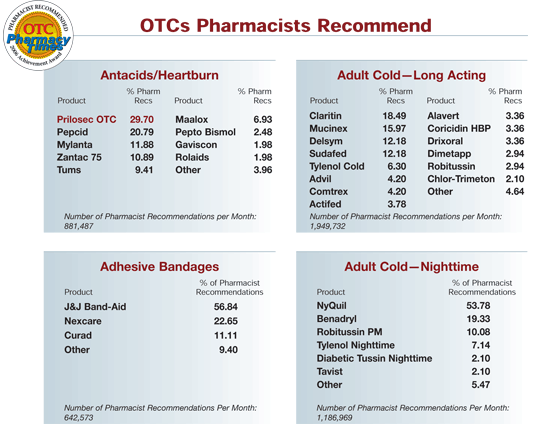
OTC Anti-infective Market Is Growing
The US market for OTC anti-infective products exceeded the $2-billion mark in 2005. Although overall growth is slow-moving, the market is a proven revenue source for a number of major brands. Several welcomed surprises in the performance of some categories included first-aid-related antiseptic and antibiotic products. Among the fastest-moving products are antifungals (jock-itch, vaginal yeast infection, and athlete's foot products), antiseptic/antibiotics, and antiparasitics, such as lice treatments.
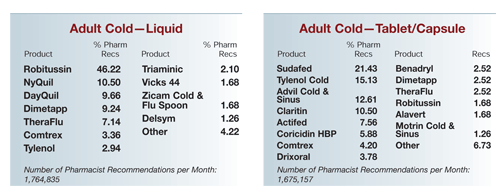
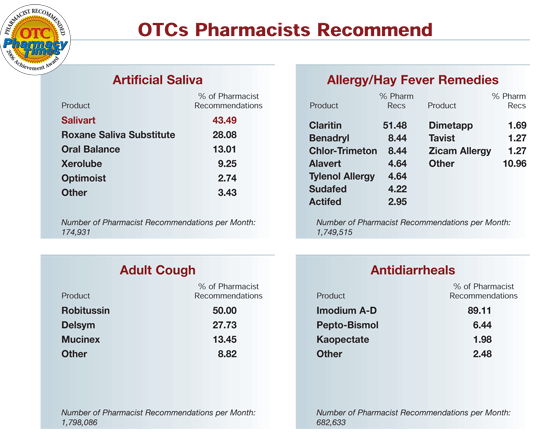
Supplement Contents Verified
NSF International has announced that new product listings for OTC dietary supplements are now available to the general public on their Web site (www.nsf.org). Consumers can use the information to make informed decisions about which supplements are right for them. NSF developed the first independent national standard in the United States to help verify that the contents on a product's label match what is actually in the bottles. If a product bears the NSF logo, it means it has been tested, and its contents and manufacturing processes have been verified by NSF.
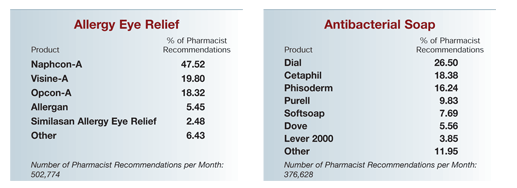
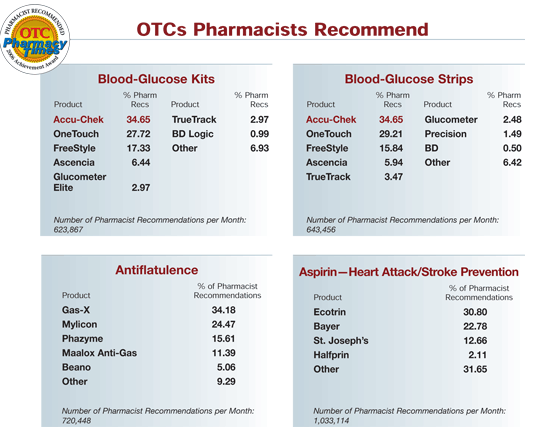
OTC Med Sales in Pharmacies See Decline
Although the majority of both prescription and OTC medicines are still sold through pharmacies, OTC sales at supermarkets are on the rise, causing many pharmacies to lose a significant OTC sales share. Among the most popular OTC products purchased at supermarkets are laxatives and remedies for indigestion and heartburn, diarrhea, motion sickness, and child-specific digestive problems.
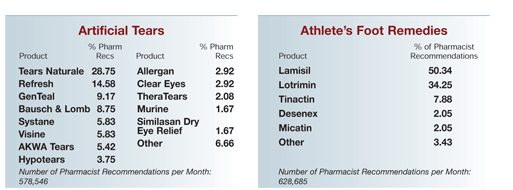

On-line OTC Sales in Japan Ignore Pharmacists
According to a survey conducted at Kyoritsu University of Pharmacy, Japan, about 24% of surveyed Internet vendors of OTC drugs based in the country are selling medicines that require consultation with a pharmacist before they are sold, but without taking part in these consultations. Japan's Ministry of Health, Labor, and Welfare currently requires that before OTC drugs with strong effects can be sold, there must be a consultation with a qualified pharmacist. Of the 156 vendors surveyed, however, 1 in 4 did not fulfill this requirement before sales. Legislation is now before the Diet to revise the Pharmaceutical Affairs Law so that such sales would be banned.
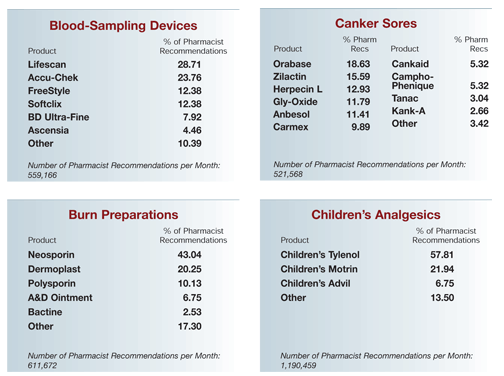
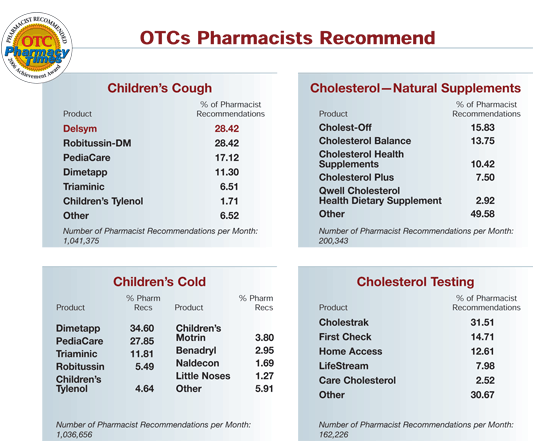
Growing Elderly Population and OTC Drug Use
A survey conducted with 39 elderly residents in North Carolina asked questions regarding their overall health, including OTC medication history and frequency of use, symptoms being treated, prescription medication history, and alcohol or caffeine intake. The results of the study, published in the Journal of Gerontological Nursing, found that the most prevalent chronic diseases identified were arthritis, hypertension, diabetes, cataracts and glaucoma, and heart problems. The researchers found that the most common symptom being treated was pain and that 90% of the participants took OTC pain medications. Participants also reported frequent use of OTC medications to treat constipation, cough and cold, and gastrointestinal problems. The researchers concluded that it is imperative for health care providers to pay close attention to the use of OTC medications in elderly patients due to the potential for adverse drug reactions or drug-drug interactions.
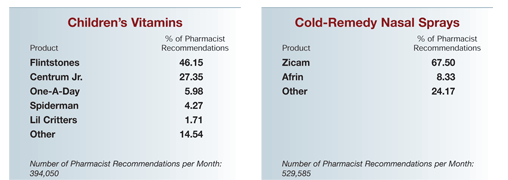
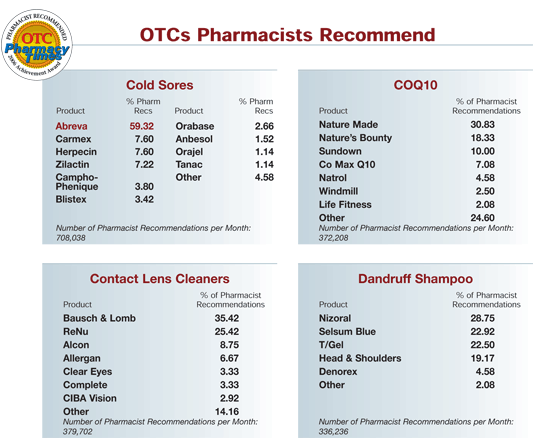
Patients Safely Use OTC Dermatologic Treatments
Details on self-treatment with OTC topical corticosteroids, such as hydrocortisone cream (HC), which are commonly used for the treatment of minor dermatologic conditions, have been scarce. A study was conducted with 2000 US adults, and users of OTC HC in the last 6 months were identified. Participants were asked about the conditions being treated with OTC HC and the frequency and duration of use in both adults and children. The results of the study, published in the Journal of the American Academy of Dermatology, found that 20% of the participants had used OTC HC, and in 83% of those cases, the conditions treated were consistent with the label. The researchers concluded that the use of OTC HC products for self-treatment in a limited and appropriate fashion is likely to be safe in adults and children.
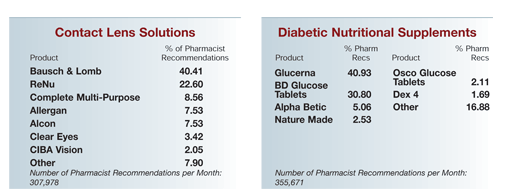
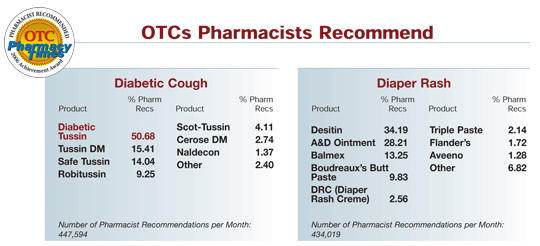

OTC Meds Used for Cardio Health
In a recent study, US investigators from the University of Minnesota found that many Americans choose to treat their hearts with a variety of nonprescription treatments, including OTC medicines, vitamins and minerals, and nonvitamin/nonmineral supplements. A cross-section of 3128 adults in the Minneapolis-St. Paul area were studied during the 2000-2002 Minnesota Heart Survey, and found that 10% of those surveyed reported taking OTC medications for a perceived cardiovascular health purpose. The results of the study were printed in the January 2006 issue of the American Journal of Preventive Medicine.
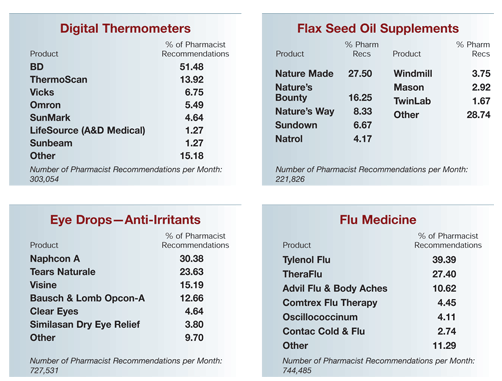
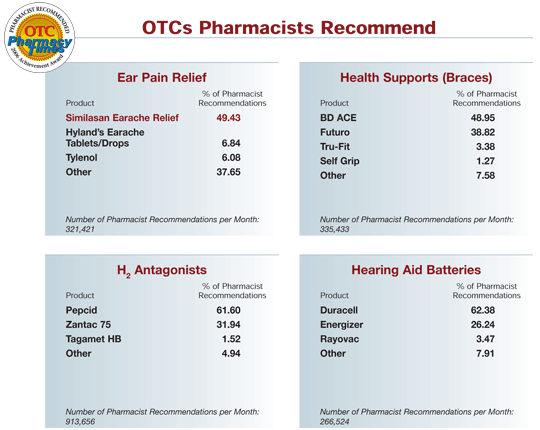
Patients with OTC Medications on Hand Demand Fewer Medical Services
A study was conducted recently in Japan to predict the demand for medical services of people with mild symptoms of the common cold. The questionnaire contained 3 alternatives for coping with the common cold: consulting a physician, taking OTC medication, and doing nothing. A total of 3139 respondents answered several questions, including the number of OTC medications on hand and socioeconomic status. Gender, age, number of family members, and income level did not have a significant impact on the choice of any of the 3 alternatives. Having a family doctor and the number of OTC medications on hand, however, did have a significant effect. Participants with >3 kinds of OTC medications were more likely to choose OTC treatment than consulting a physician. The study suggested that, the more kinds of OTC medications an individual had on hand, the lesser demand the individual would have for medical services.
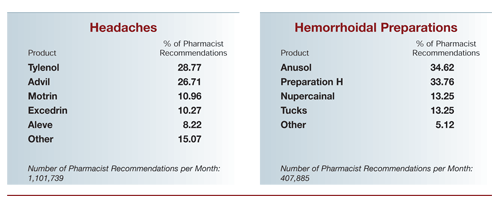
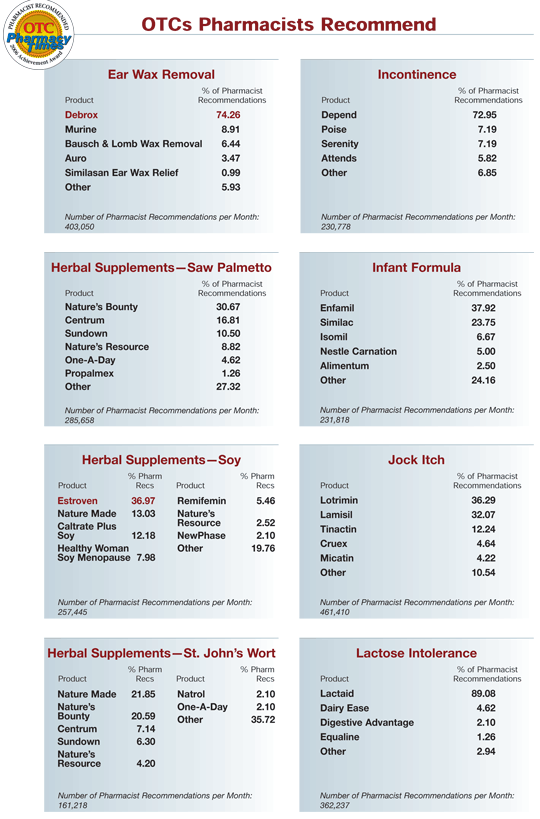
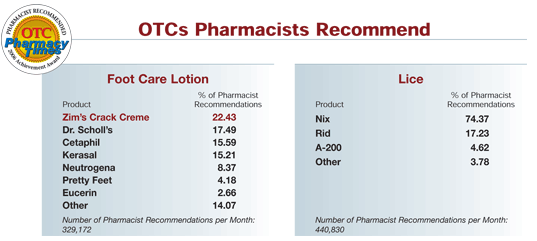
OTC Statin Availability?How It May Impact Public Cardiovascular Health
The availability of OTC statins has been debated recently, as it may represent an option for treating patients at moderate risk of coronary heart disease (CHD) who are not currently receiving drug therapy. The Consumer Use Study of Over-the-Counter Lovastatin (CUSTOM) looked at patient behavior in a simulated OTC setting in which 20 mg of lovastatin was available for purchase. On average, the group had a median 10-year CHD risk of 10%. According to the risk profile of CUSTOM participants, the use of 20 mg of lovastatin for 10 years would be expected to prevent approximately 33,100 CHD events per 1 million users. This finding led the researchers to conclude that OTC statin availability is likely to result in clinically meaningful reductions in CHD morbidity and mortality.
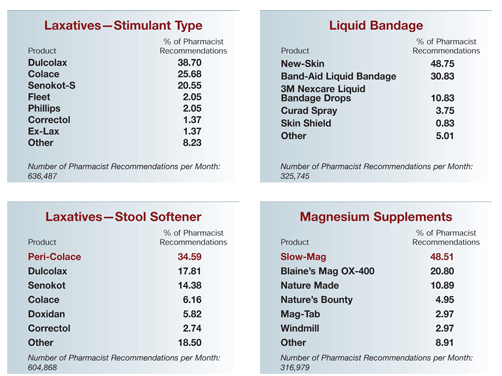
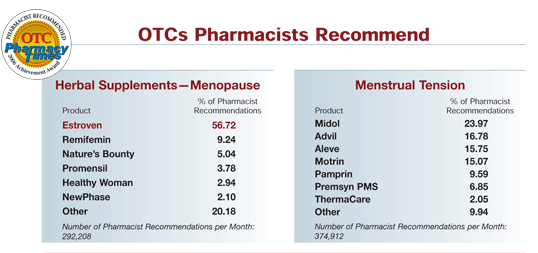
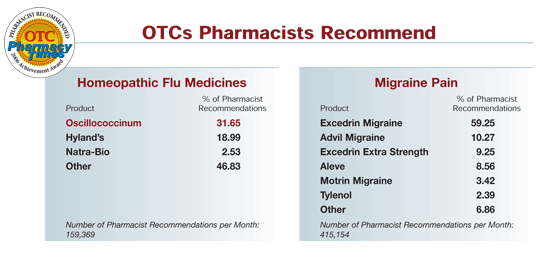
OTC Medication Sales May Detect Disease Outbreaks
Because OTC medications are often used during the first phase of illness, it is hypothesized that increases in their sales may represent an early indicator of community-wide disease outbreaks. The New York City Department of Health and Mental Hygiene (DOHMH) tracked OTC medication sales to enhance detection of natural and intentional infectious disease outbreaks. The DOHMH categorized sales data into 2 groups: influenza-like illness (ILI), which included cough and influenza medications, and gastrointestinal illness, which included major brand and generic antidiarrheals. Citywide trends in these medication sales were compared with emergency department visits for fever/influenza and diarrhea syndromes. The results of the study found that ILI drug sales were highest during annual influenza epidemics and elevated during spring and fall allergy seasons.
Public Perspectives on OTC Medications
As the use of OTC medications for self-treatment has been rising, the possibility of misuse or abuse of these products also has increased. A study, published in Family Practice, investigated the general public's opinion and perceptions about OTC medications, including the misuse or abuse of such products. The questionnaire used for the study addressed 4 topics: (1) attitudes toward community pharmacy and patients' contact with pharmacies; (2) attitudes toward the use of OTC medications; (3) views on OTC medications in terms of safety, potency, and effectiveness; and (4) knowledge and opinion of misuse or abuse of OTC medications. The survey found that the general public had a high level of awareness of the abuse potential of OTC medications.
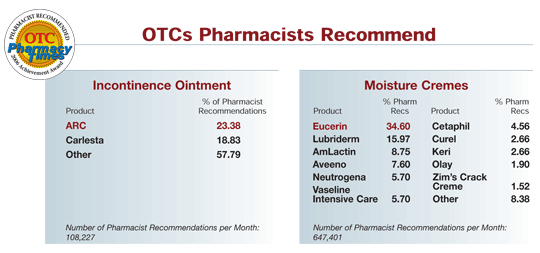
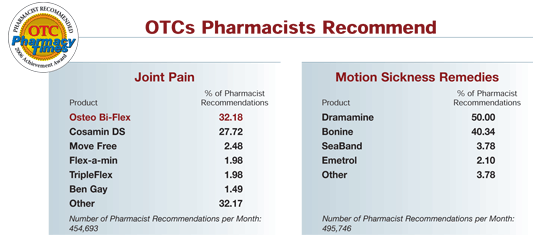
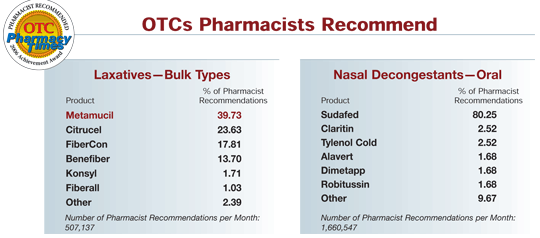
Med Combo Better for Migraine Than Ibuprofen
Fifty-seven percent of migraine sufferers treat themselves with OTC remedies. A recent study shows that one remedy is more effective for bringing relief to these patients. The combination of acetaminophen, aspirin, and caffeine was shown to relieve pain more effectively and quickly than ibuprofen. The drug combination also lasted longer than ibuprofen, according to researchers at the San Francisco Headache Clinic. The findings support recent recommendations of the US Headache Consortium and the German Migraine Headache Society. They were published in the March 2006 issue of Headache.
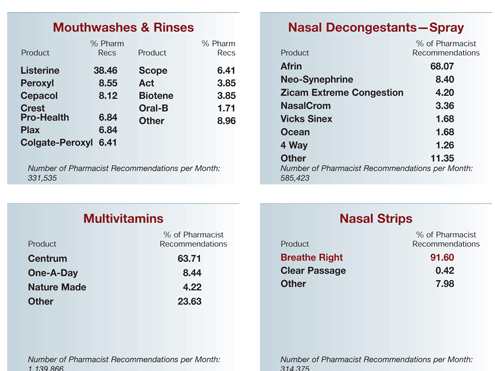
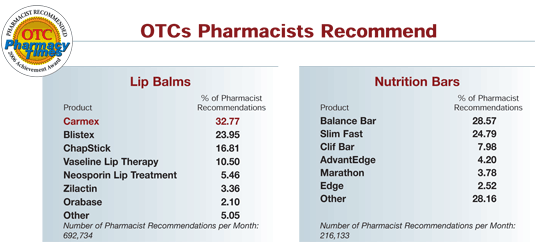
MedVantx Launches OTC Advantage
In a move aimed at widening patient access to cost-effective OTC medications, MedVantx Inc announced the introduction of OTC Advantage, a program that enables physicians who participate in the nationwide MedVantx Network to easily dispense and track free, full-course samples of OTC drugs for use as first-line therapy. One of the first OTC brands to be offered in the program will be Prilosec OTC (omeprazole magnesium 20.6 mg), a proton-pump inhibitor taken for frequent heartburn. Prior to this program, the Network only offered generic drugs; now it will include generic and OTC medicines in 12 therapeutic classes.

Private Label OTCs Digging Into Brand Names
The market for private label OTC medicines is expected to reach $3.6 billion by the year 2010, according to a recent study from Kalorama Information, a division of MarketResearch.com. This growth would be supported by increasing sales in the cough/cold/allergy/sinus, first-aid, and antismoking sectors. The US Market for Private Label OTC Healthcare Products predicts that, thanks to the shedding of the second- rate, copycat-of-national-brands image they once had, private labels have gained the respect of the average consumer, as sales rose to capture 19.7% of the OTC market share in 2004?with sales topping $3.4 billion in 2005.

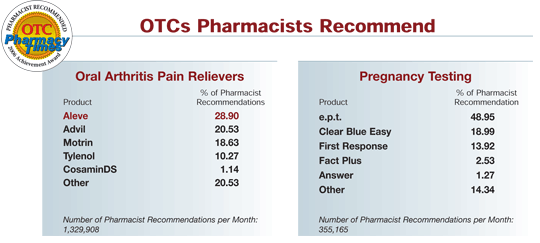
OTC Tax Deductibility
The OTC Medicines Tax Fairness Act is seeking to amend the Internal Revenue Service Internal Revenue Code 213, so that OTC medicines would be allowed as tax-deductible medical expenses. Companion bills were introduced into both houses of Congress in July 2005. Supporters of the Act quoted different studies that show the cost-effectiveness of OTC medications. One study showed that for 12 different ailments, every dollar that was spent treating them with an OTC remedy yielded a $2.47 savings in overall health care costs, taking into account savings vs doctor visits, time lost from work, and prescription drug costs. Another study estimated that Americans spent over $19 billion on OTC medicines in 2000, which was less than 2% of the $1.3 billion in total medical costs for that year.

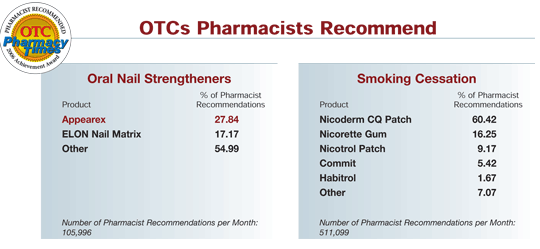
Orthopedic Surgeons Prefer OTC Meds to Rx
A survey of 245 US orthopedic surgeons found that nearly 80% of them recommend OTC treatment most often as a first-line option for pain relief in their patients with minor osteoarthritis. Over the past year, 68% of surgeons said that they have decreased cyclooxygenase-2 prescriptions and increased OTC recommendations for minor arthritis pain. Also, based on their experiences, 97% of the surgeons surveyed believed that OTCs can be an effective alternative to prescription pain relievers.
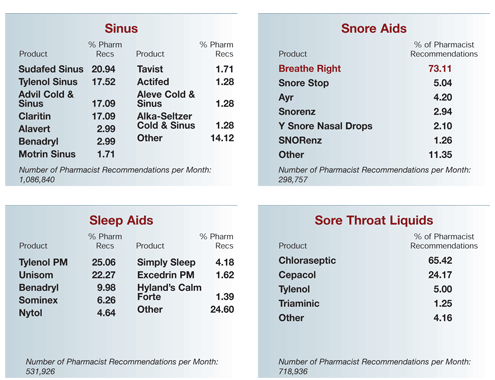
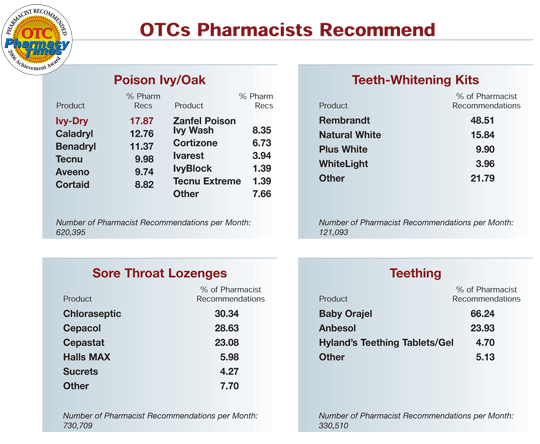
OTC Drug Abuse in Teens
A recent fad among adolescents and young adults is the abuse of cough and cold medicines that contain the ingredient dextromethorphan (DXM). DXM produces a "high" feeling when taken in larger-thanrecommended amounts, but also produces numerous unwanted and harmful effects, such as confusion, double or blurred vision, loss of physical coordination, abdominal pain, nausea and vomiting, rapid heart beat, and numbness of fingers and toes. There are >100 OTC medicines that contain DXM, either as the only active ingredient or in combination with other active ingredients. Recent research indicates that 1 out of 11, or >2 million American teens, have abused cough medicine.
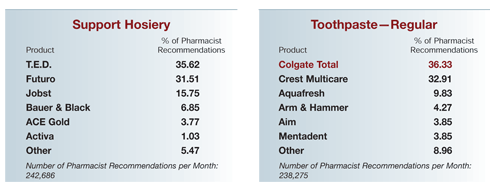
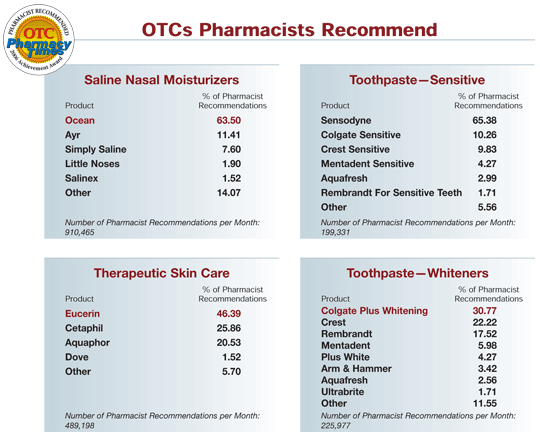
FDA Encourages Patients: Read the OTC Label
The FDA encourages all patients to read the labels of their OTC medicines as carefully as they would their prescription drugs. They have made this easier by issuing a regulation to make sure that all OTC products list their information in the same order, arrange the information in an easier-to-read, consistent style, and use language more geared towards the average patient. All labels have detailed usage and warning information so that patients can make the most informed decision about which OTC medicine to choose, since most OTC purchases are made without consulting a physician.
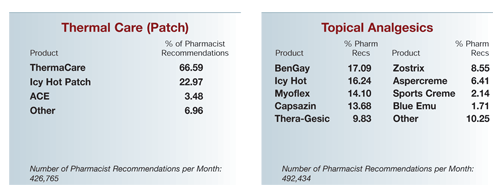

Federal Law Promotes Reformulation of Decongestants
Because pseudoephedrine (PSE) can be used to make the illegal drug methamphetamine, a federal law passed on April 8, 2006, requires all pharmacies to place OTC decongestants containing PSE behind the counter by September 30 of this year. This limited availability has prompted the makers of these decongestants to develop alternatives to PSE. One of these alternatives is phenylephrine, which cannot be used in the making of illegal drugs. Some of these products already are available over the counter, with more expected to come out before the September 30 deadline. By then, experts say, there will probably be only 25 to 30 PSE-containing products left. These products will be available only to customers willing to show identification and sign a log book, documenting what they bought and when.
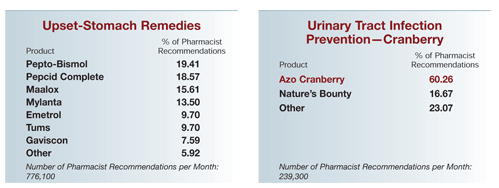
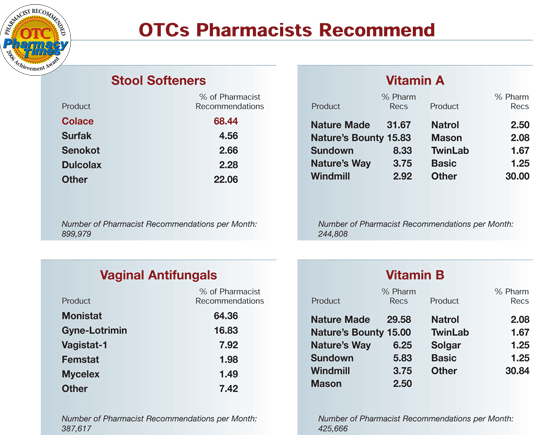
Significant Differences in Similar OTC Meds
The main categories of OTC pain relievers?aspirin, acetaminophen, and ibuprofen/naproxen?can bring relief when used properly, but, if not, they can actually aggravate a patient's symptoms. Each group of drugs works differently to treat specific illnesses. Aspirin, for example, thins the blood and slows the clotting progress?good news for someone with cardiovascular problems, but bad news for patients with gastrointestinal problems. Aspirin also is not recommended for children. Acetaminophen is a very effective pain reliever and fever reducer for both adults and children, but it can cause liver damage if more than 4 g/day is used. Ibuprofen and naproxen are both good for pain relief and as anti-inflammatory agents, but they are not as effective as acetaminophen for fever reduction.
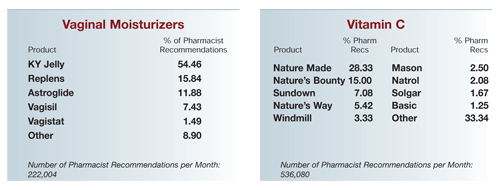
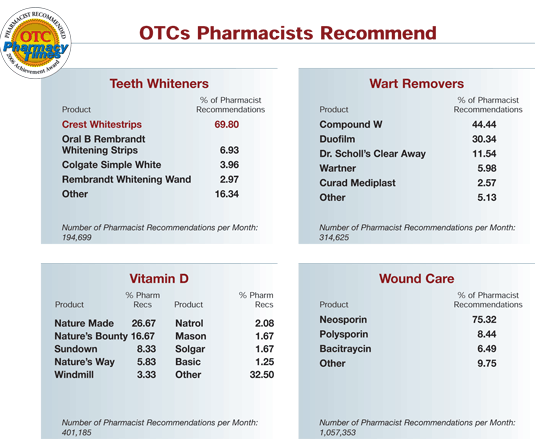
Patients Must Take Care When Using Meds Plus Herbals
According to the results of a new study, older women are more likely to mix OTC and prescription medications with herbal remedies without consulting their physicians. A report in the March 2006 issue of Geriatric Nursing says that this practice puts these patients at greater risk. They do not consider OTC medicines and herbal supplements to be "real drugs," and therefore they do not report them to their doctors when asked if they are taking other medicines. About half of older Americans (>65 years of age) take 5 or more medications?including prescriptions, herbals, and OTCs?on a regular basis. Patients need to be advised that there may be dangerous interactions between their prescriptions and any OTC meds or herbals about which they have not told their doctors.
